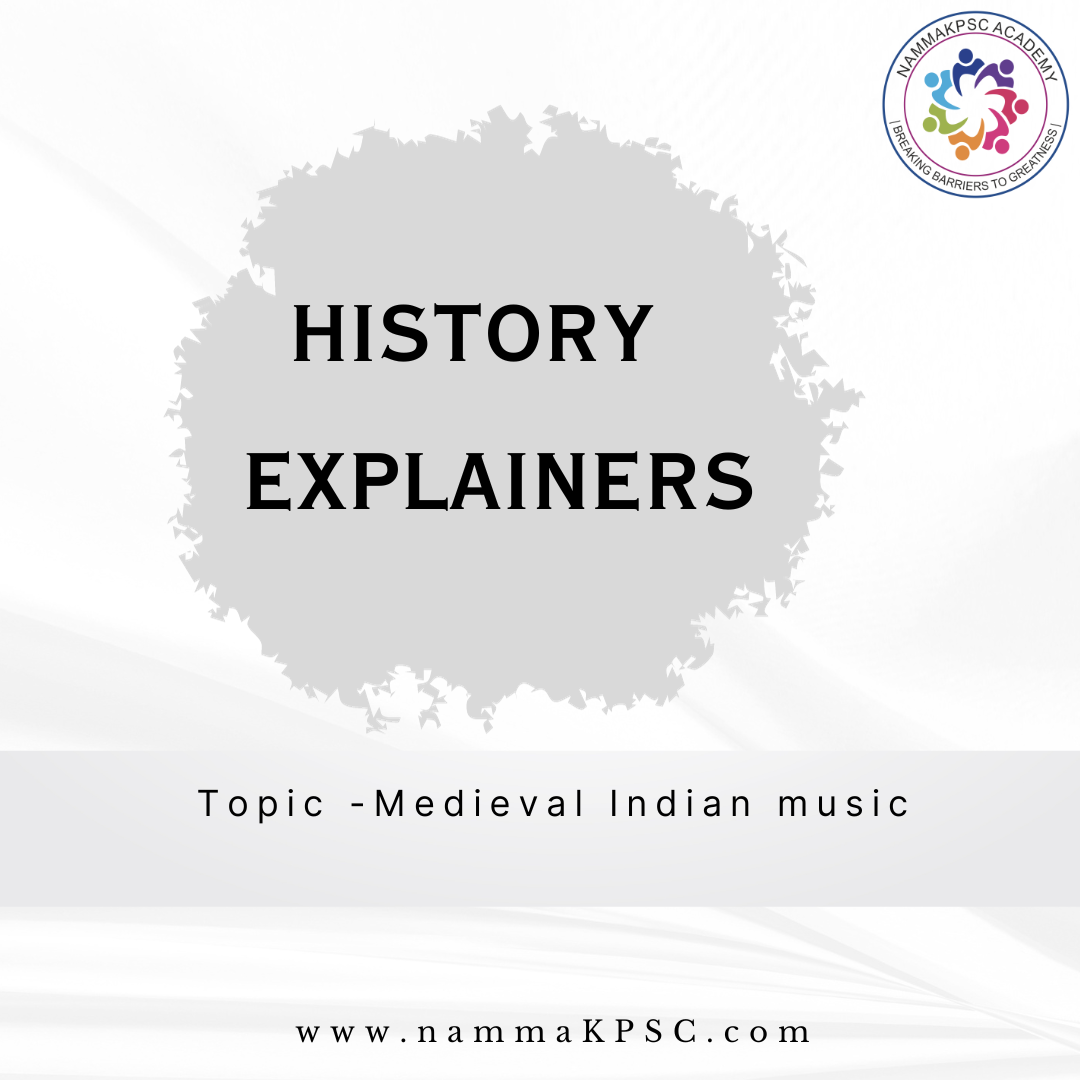Published on: January 15, 2024

Medieval Indian music
Medieval Indian music

Medieval Indian music has a rich and diverse history, reflecting the cultural and regional variations across the Indian subcontinent. The medieval period in Indian history spans roughly from the 6th century to the 18th century. During this time, several notable developments occurred in the field of music
- Classical Music Traditions:
- Hindustani Classical Music: This tradition emerged in the medieval period, blending elements of Persian and Indian musical styles. It developed in the northern regions of India and was influenced by the courts of the Mughal emperors. Prominent features include raga (melodic framework) and tala (rhythmic cycle).
- Carnatic Classical Music: Originating in the southern part of India, Carnatic music has ancient roots but continued to evolve during the medieval period. It is characterized by a system of melodic scales (ragas) and rhythmic patterns (talas).
- Musical Instruments:
- Veena: The veena is an ancient string instrument that gained prominence during the medieval period. It became an integral part of classical music performances.
- Sitar and Sarod: These plucked string instruments evolved during the medieval period and became important in Hindustani classical music.
- Tabla: The tabla, a pair of hand-played drums, also developed during this time and became a crucial component of rhythmic accompaniment.
- Devotional Music:
- Bhakti and Sufi Music: The medieval period witnessed the rise of Bhakti and Sufi movements, which had a significant impact on music. Devotional songs and compositions in praise of deities (Bhakti) or expressing spiritual love (Sufi) were composed and performed.
- Courtly Patronage:
- Mughal Courts: The Mughal emperors were great patrons of the arts, including music. The synthesis of Persian and Indian musical elements was particularly evident in the Mughal courts.
- Vijayanagara Empire: The Vijayanagara Empire in the south was also known for its patronage of arts and music. The rulers of Vijayanagara were patrons of Carnatic music.
- Ragas and Rhythms:
- The medieval period saw the codification and development of ragas (melodic modes) and talas (rhythmic cycles). Musicians composed intricate pieces within these frameworks, exploring the emotional and aesthetic nuances of different ragas.
- Notable Musicians:
- Tansen: One of the most renowned musicians of the medieval period, Tansen was a prominent figure in the court of Akbar. He is often regarded as one of the greatest classical musicians in Indian history.
- Purandara Dasa: A key figure in the development of Carnatic music, Purandara Dasa is credited with laying the foundation for the modern system of teaching music.
The music of medieval India laid the groundwork for the classical traditions that continue to thrive today in both the Hindustani and Carnatic styles. It is important to note that regional variations and local influences also played a significant role in shaping the musical landscape during this period.


Have uploaded Carnatic basic musics like sarali varisai in other ragas too besides the traditional mayamalavagowla.